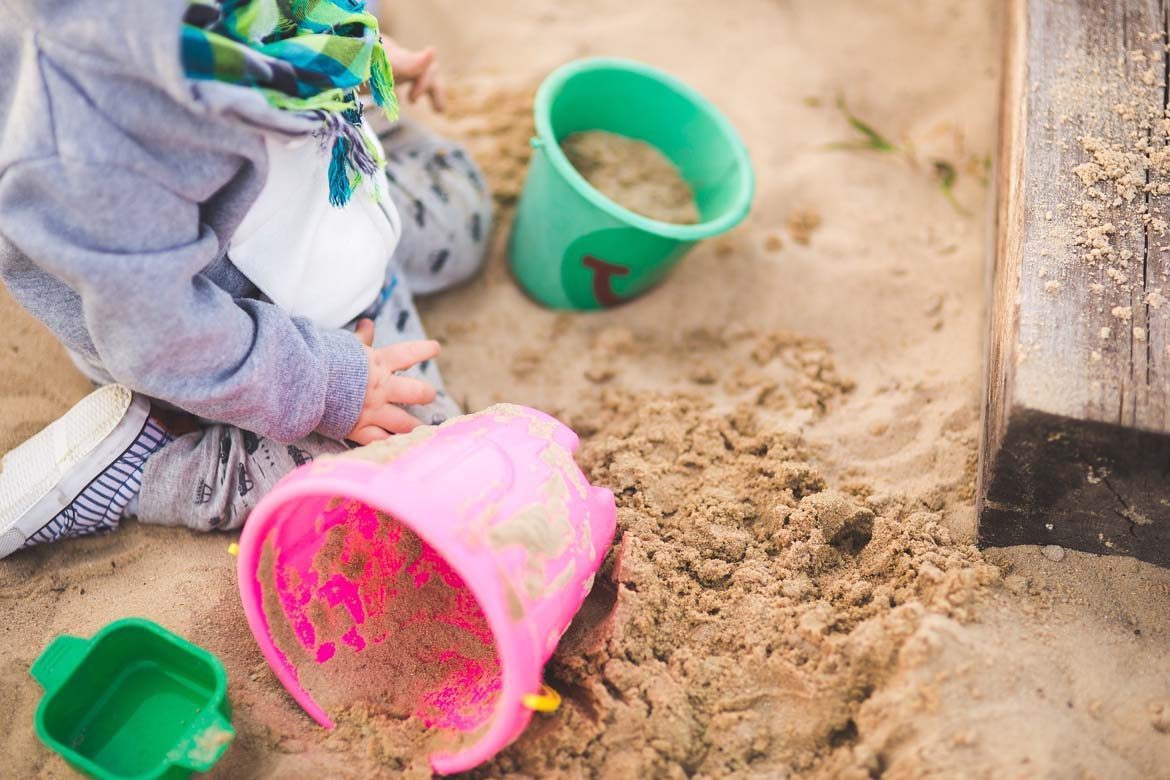She’s bold, bright, a leader – no wallflower this girl. She’s eager to connect with her peers, and a simple hello isn’t enough. She wants their attention. She wants interaction. And, ideally, she wants a reaction. Naturally, her social skills are a work in progress, and while she’s learning how to engage in play, she’s often misunderstood. Her antics sometimes worry and embarrass her parents and elicit their disapproval. Her toddler peers are all-forgiving (even when they’ve been on the losing end of her toy snatching), but her friends’ parents might be less understanding.
In every RIE parent/toddler group I’ve facilitated there is at least one boy or girl who experiments with taking toys from her peers. With infants and younger toddlers especially, it is often a social gesture, a way to ‘play together’, to say, “Hi!” or “Hmmm…what have you got there?” or “The way you are moving that toy around is intriguing. I’m going to check it out.” There is a tentative reach for the object, in some cases a quick grab, a struggle (or not), and someone ends up with the item. But as long as the adults stay relaxed and non-judgmental, the ‘victims’ rarely get upset about their object being lifted.
Parents appreciate RIE classes because they are a sanctuary where infants are free to interact and toddlers are allowed to work through conflicts safely and learn from them with minimal adult intervention. The facilitator is nearby to keep children from hurting each other. When there is a struggle over a toy, our intention is to allow the children to participate as actively as possible in problem-solving. If we don’t step in, toddlers often surprise us by being able to handle conflicts themselves. As infant specialist Magda Gerber suggests in Dear Parent – Caring For Infants With Respect, “If every time adults jump in and bring in their version of what is right, the children learn either to depend on them or to defy them. The more we trust they can solve, the more they do learn to solve.”
Rather than jumping in immediately, Magda advised “sportscasting” during conflicts – calmly and impartially stating just the facts to let the children know that we understand and empathize, i.e., “Ben was holding that, and now Ella has it”. Or, if a child seems upset, we acknowledge, “It bothered you when Ella took the toy.”
But sometimes toy-taking becomes more than an occasional experiment – it becomes a pattern of behavior that does need addressing. The parents and facilitator then try to figure out what is motivating the behavior and gauge the most productive way to intervene. This happened in one of my classes, and we all learned from it.
Sabrina was very much the bold, bright leader I described above. At some point during her second year she began habitually taking toys from others. It always appeared to me that she was exhibiting a strong desire to engage her friends in play, but like most toddlers her age, she didn’t quite know how.
A boy named Tom joined the class when he was around 18 months old. After a period of adjustment, he would enter the classroom bursting with excitement and toddle off exuberantly to play, usually on his own. He kept to himself, seemed to prefer staying out of the fray (especially out of Sabrina’s fray), and he would give toys up easily if another child tried to take one from him without seeming to mind. He didn’t struggle, just moved on to another toy. This seemingly passive reaction from a child often concerns parents as much as a child’s aggression does. Is my child too timid? Will he always shy away from conflict, let others take advantage and walk all over him?
As the class evolved, we realized that Sabrina’s toy taking had become a little compulsive. Although she often offered toys, too, and initiated wonderful games with another girl in the class (like the ones I mention in Toddlers Invent The Silliest Games – And 33 Other Reasons To Let Babies Play Their Way), sometimes she’d spend a good portion of the 90-minute session playing snatch-and-grab. It began to seem more like a test for the adults around her and less like something she and the children could work through entirely on their own. Sabrina’s parents and I agreed that she needed some guidance, so we decided that I would intervene when she seemed stuck in a pattern of taking toys.











